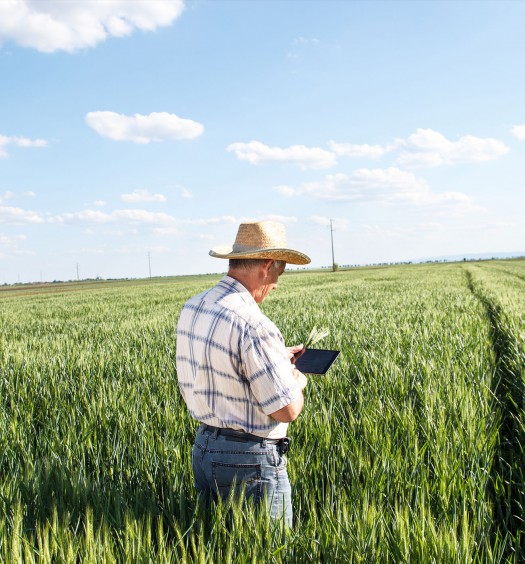Comparisons are odious, but 2019 opens while the stars of the third industrial revolution are still shining in an age of more or less autonomous electric vehicles and artificial intelligence. Will the ‘Roaring Twenties’ repeat themselves as the stock markets falter and the threat of recession, or at least the economic downturn, begins?
And then, in the corner, there is this American posture of marked withdrawal and especially the misunderstanding of the global geopolitical issues seen through a prism that will shrink even more over the months, the closer we get to the elections of 2020 and the possible second term of Donald Trump: recent decisions to withdraw American forces from Syria are an additional demonstration. But in 2019, there will be many other due dates with China, Iran and Europe (itself ‘post-Brexit’).
Presented at the end of January, CyclOpe’s forecasts are relatively pessimistic after the ‘bell-shaped profile’ of 2018. S, strongly stuck as they are for the most part at low levels like oil, sugar and nickel. Of note are ever more bearish prospects for liquefied natural gas and soy which remains—by far—the most ‘political’ of all amenities.
But of course, our forecasts are made under geopolitical and climatic conditions that are somewhat ‘stable’. This leaves a (welcome) margin for the happenstance that promises to make this year quite exciting.
Philippe Chalmin
To subscribe to the Monthly Report or Cyclope events please contact us at trading_event@ampersandworld.ch
COMMODITY MARKETS BRIEFS
According to the ICSG, the copper market saw a deficit of 545,000 tonnes in the first ten months of 2018 on a world production of 20.18 Mt.
According to the analysts at Green Pool, the world sugar market should be in deficit by 1.36 Mt in 2019/2020 after a surplus of 2.64 Mt in 2018/2019 and 19.60 Mt in 2017/2018. By 2019/2020, Indian production should decrease to less than 30 Mt against 33.5 Mt in 2018/2019.
OPEC oil production declined in January by 890,000 bd compared with December to 30.98 mbd. Saudi Arabia reduced production by 350,000 bd. On the other hand, in November, American production broke a new record with 11.9 mbd, an increase of 345,000 bd in October. A Reuters survey of analysts gives an average Brent price in 2019 of $67.32.
The world ‘consumed’ 4345 tonnes of gold (4,157 tonnes in 2017) in 2018. Central banks bought 651 tonnes (+74%), the highest level since 1967! Jewellery represented 2,200 tonnes, investment 1,090 tonnes (of which 62 tonnes bought in Iran!). ETF funds represented only 70 tonnes. The supply of gold represented 4,490 tonnes. (WGC)
According to Wood Mackenzie, nickel smelting (NPI) production is expected to reach 840,000 tonnes in 2019, up 12%. In terms of metal content, Indonesian production is estimated at 770,000 tonnes, supplying the local production of nickel cast iron, mostly under Chinese control. Nevertheless, another analyst anticipates a global nickel deficit in 2019 of 96,000 tonnes after 129,000 tonnes in 2018.
Australia plans to export 77 Mt of LNG in 2019 becoming the world’s leading exporter ahead of Qatar, which will regain its rank in 2023 with 105 Mt ahead of the United States and Australia. In the meantime, LNG prices have fallen sharply to less than $8 / MBtu.
Warren Buffett is investing in lithium from geothermal facilities in California.
In January, the United States became the largest oil supplier to the United Kingdom for the first time since 1956 and the Suez crisis, with 264,000 bd.
According to the IGC, the world is expected to produce a record 363 Mt of soybeans in 2018/2019, slightly lower than forecast in November due to the drought in Brazil.
The sharp rise in prices of Russian wheat offers prospects for other origins on the Egyptian market. The United States could export more than 1.5 Mt.
Japan’s oil imports were the weakest in 40 years in 2018 at 3 mbd.
The United States has “almost” declared an embargo on Venezuelan oil. US companies can still buy Venezuelan oil, but payments will have to be made into a blocked account (with the exception of shipments bought by the refiner Citgo, the eighth US refiner owned by the Venezuelan government, and under provisional administration). There is a good chance that Venezuela is looking for new markets for the 500,000 bd it still sells in the US market. But as in the case of Iran, US sanctions on Venezuela can be extraterritorial and so limit the role of intermediaries.
Following the disaster caused by a dam failure, Vale cancelled production around ten other dams of the same nature, which would affect 10% of iron ore production.
A poll conducted by Reuters gives an average price for palladium of $1,200 an ounce in 2019 (exactly the forecast of CyclOpe), of $1,305 for gold ($1,290 for CyclOpe) and of $856 for platinum ($850 for CyclOpe).
The European Commission has validated the use of American soybeans as biofuel in Europe until July 2021. In 2018, 400,000 tonnes of soybean oil were used in Europe as biofuels compared with 5.9 Mt of rapeseed oil.
OPEC oil production declined in January by 890,000 bd from December to 30.98 mbd. Saudi Arabia reduced production by 350,000 bd. On the other hand, American production broke a new record in November with 11.9 mbd, an increase of 345,000 bd over October. A Reuters survey of analysts gives an average Brent price in 2019 of $67.32.
In 2018, China imported an average of 9.24 mbd of oil (+10%) with the last two months of the year above 10 mbd. The increase in Chinese imports is 846,000 bd, the equivalent of the consumption of the Netherlands? That said, China has also broken a record of exporting petroleum products (58 Mt, an increase of 12%), which represents the equivalent of 15% of imports. Russia, with 1.43 mbd was the number one supplier of China ahead of Saudi Arabia (1.13 mbd) and Iran (585,000 bd). Natural gas imports rose 32% to 90.4 Mt making China the world’s largest importer. China also imported 281 Mt of coal, the highest in four years (+4%).
By contrast, China reduced its soybean imports by 8% to 88 Mt. In December, China imported only Brazilian soybeans. For the year as a whole, China imported only 16.6 Mt from the United States, half of what it imported in 2017. China also halved its imports of pork (263,000 t.).
Among metals, Chinese copper imports increased from 12.9% in 2018 to 5.3 Mt due to lower imports of non-ferrous scrap. Imports of concentrate increased by 13.7% to 19.7 Mt. However, imports of iron ore fell for the first time since 2010 to 1,064 Mt (-1%).
In mid-January, three tankers loaded with US crude oil were on their way to China, the first Chinese purchases in three-months following soy purchases in December.
In 2018, the total value of transactions on carbon markets increased by 250% to €144 billion. The European market accounts for 90% and the United States 9%.
Contrary to the forecasts of CyclOpe, a poll conducted by Reuters has anticipated a rise in 2019 of palm oil prices (+3% to $590 per tonne) based on increased demand for biodiesel.
To subscribe to the Monthly Report or Cyclope events please contact us at trading_event@ampersandworld.ch















